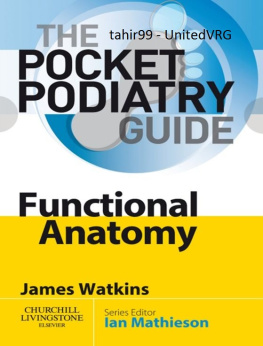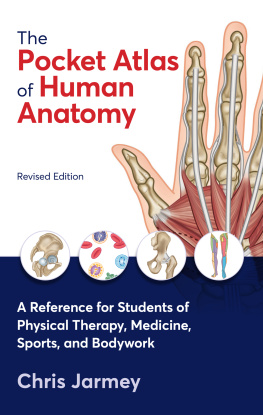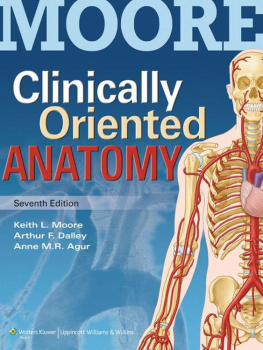Table of Contents
Copyright Page
First published 2009 Elsevier Limited. All rights reserved.
No part of this publication may be reproduced or transmitted in any form or by any means, electronic or mechanical, including photocopying, recording, or any information storage and retrieval system, without permission in writing from the publisher. Permissions may be sought directly from Elsevier's Rights Department: phone: (+1) 215 239 3804 (US) or (+44) 1865 843830 (UK); fax: (+44) 1865 853333; e-mail: .
ISBN 978 0 7020 3032 1
British Library Cataloguing in Publication Data
A catalogue record for this book is available from the British Library
Library of Congress Cataloging in Publication Data
A catalog record for this book is available from the Library of Congress
Notice
Neither the Publisher nor the Editors/Authors assume any responsibility for any loss or injury and/or damage to persons or property arising out of or related to any use of the material contained in this book. It is the responsibility of the treating practitioner, relying on independent expertise and knowledge of the patient, to determine the best treatment and method of application for the patient.
The Publisher
Printed in China
Foreword
Ian Mathieson
It gives me great pleasure to introduce you to Functional Anatomy, the first book in the Pocket Podiatry series. The vision of Robert Edwards, the then Commissioning Editor for Podiatry at Elsevier, the series will see volumes published over the next 5 years or so. These will build into a highly informative and clinically-oriented reference library for both under- and post- graduate podiatrists alike, as well as those from other disciplines who are involved in the management of foot, ankle and lower limb disorders. Other titles in the series include Gait, The Ageing Foot, The Paediatric Foot, Examination and Diagnosis, Pharmacology, Footwear and Orthoses, and Podiatric Surgery. It is perhaps indicative of the progress, and current status, of Podiatry that a series providing such breadth of information can be presented as reflecting the true scope of clinical practice, and as representing vital knowledge for contemporary clinical practise.
This first volume, concerned with Functional Anatomy, is an entirely appropriate series opener: podiatrists are only too aware of the importance of the weight bearing function of the foot, and its functional complexity. This volume reviews the nature of the stresses applied to the foot, their impact on various tissues, how they are managed, and how pathology can result from functional impairment. The author, James Watkins, is Professor of Biomechanics at Swansea University, but has a long history of involvement with Podiatry through a previous post in Glasgow which saw him teach the principles of mechanics to undergraduate Podiatrists for many years. This places him in a unique position to reconcile the science of biomechanics with the demands of clinical practice, and the lucid way in which this is achieved makes this volume an exciting and welcome addition to the Podiatric literature.
Professor Watkins is one of a team of writers recruited to the project who rank as some of the brightest talents working within, or with, the Podiatry profession. Each has substantial experience and a passion for their subject that is conveyed in their writing, and it is an enviable position I find myself in, being involved in the development of the manuscripts. I hope that, as more volumes are published, you judge the series to be the valuable companion to clinical podiatry it is designed to be and that your patients benefit.
Preface
James Watkins
Human movement is brought about by the musculoskeletal system (bones, joints, skeletal muscles) under the control of the nervous system. The bones of the skeleton are linked together at joints in a way that allows them to move relative to each other. The skeletal muscles pull on the bones in order to control the movements of the joints and, in doing so, control the movement of the body as a whole. By coordinated activity of the various muscle groups, forces generated by the muscles are transmitted by the bones and joints to enable the individual to maintain an upright or partially upright posture, move from one place to another and manipulate objects.
The open-chain arrangement of the bones of the skeleton maximizes the range of possible body postures. However, this movement capability is only possible at the expense of low mechanical advantage of skeletal muscles, which results in relatively high forces in all components of the musculoskeletal system in most postures and movements. In response to the forces exerted on them, the musculoskeletal components experience strain (deformation). Under normal circumstances, the musculoskeletal components adapt their size, shape and structure to readily withstand the strain of everyday physical activity. This process is referred to as structural adaptation and is continuous throughout life. In the absence of disease, structural adaptation tends to maintain normal function. However, the capacity of the musculoskeletal components, especially bone, to undergo structural adaptation decreases with age. Consequently, strain that would normally result in structural adaptation in a young person may result in tissue degeneration and dysfunction in an older person.
In weightbearing activities, the function of the musculoskeletal system is to transmit the weight of the body to the ground by creating ground reaction forces at the feet to maintain upright posture and move the body in the intended direction. In walking, and other forms of locomotion such as running, hopping and jumping, the feet act alternately as shock absorbers, to cushion the impact of the foot with the ground, and propulsion mechanisms, to propel the body in the desired direction. These distinct functions are reflected in the flexible arched structure of the foot, which is indicative of the essence of functional anatomy, i.e. the intimate relationship between the structure and function of the musculoskeletal system. Accurate diagnosis and appropriate treatment of disorders of the musculoskeletal system depends largely on the clinicians knowledge and understanding of this relationship.
The purpose of this book is to develop knowledge and understanding of functional anatomy with particular reference to the foot. The book is primarily designed as a course text for undergraduate students of podiatry, but it also has a great deal to offer the practising podiatrist and other healthcare professionals, in particular, physiotherapists and occupational therapists, who deal with the acute and chronic effects of lower limb musculoskeletal pathology.
The book has seven chapters. describes the structure of the foot and, in particular, the function of the foot in walking.
No previous knowledge of functional anatomy is assumed. To aid learning, the book features a content overview at the start of each chapter, key concepts highlighted within the text, extensive use of illustrations, review questions, references to guide further reading, and an extensive glossary and index.
Acknowledgements
Thank you to the series editor Dr Ian Mathieson and all of the staff at Elsevier who contributed to the commissioning and production of the book. Thanks also to my academic colleagues and the large number of students who have helped me, directly and indirectly, over many years, to develop and organize the content of the book.
CHAPTER 1. Elementary biomechanics
Chapter contents






